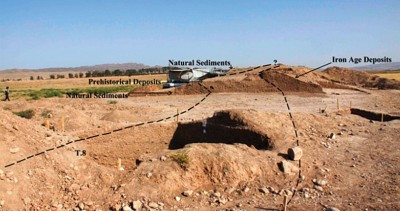Human motifs at Neolithic Tepe Baluch, north-east Iran
Abstract

The start of sedentary farming and herding in the Middle East transformed social and economic organisation and reshaped ideological structures and artistic representations. Tepe Baluch is a Neolithic settlement on the Neyshabur Plain in north-east Iran. Amongst the ceramic material excavated at the site, one particular sherd is of great interest. It is decorated with two (possibly three) motifs in the form of human figures. For this date and region, such Neolithic iconography is rare, and this short article develops a comparative analysis to explore its significance.
Authors
- Hadi Sabori
Department of Archaeology, Art University of Isfahan, Hakim Nezami Street, Isfahan, Iran (Email: hadisabori79@yahoo.com) - Mina Norouzi Khorasani
Department of Archaeology, University of Shahid Beheshti, Shahid Chamran Highway, Yemen Street, Shahid Shahriari Square, Daneshjo Boulevard, Tehran, Iran (Email: mnoruzi@gmail.com) - Reza Bolandi
Department of Archaeology, University of Golestan, Shahid Kalantari Boulevard, Shahrak Shahriyar, Shahriyar 5 Street, Golestan, Iran (Email: rezabolandi@yahoo.com)

 Cite this article
Cite this article